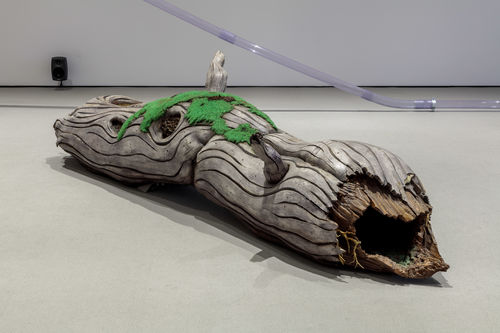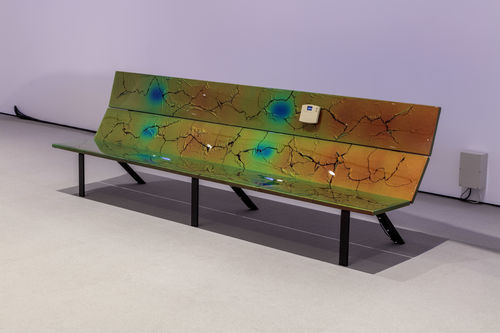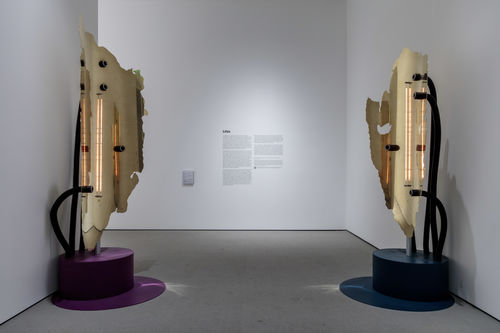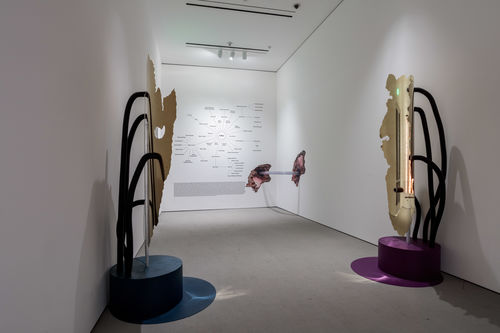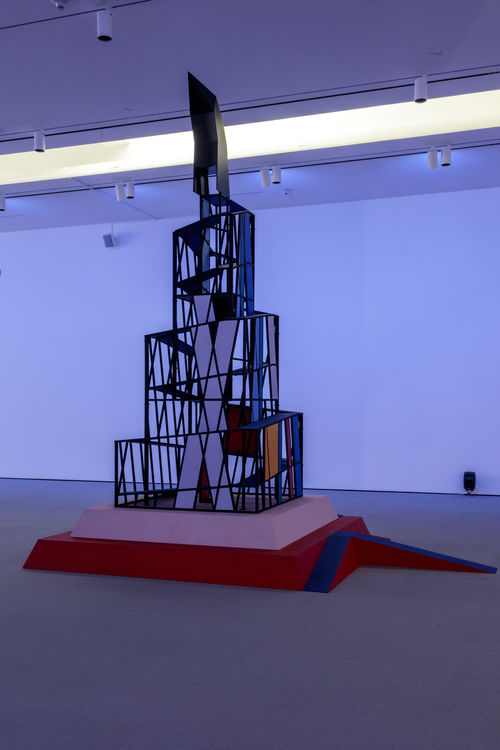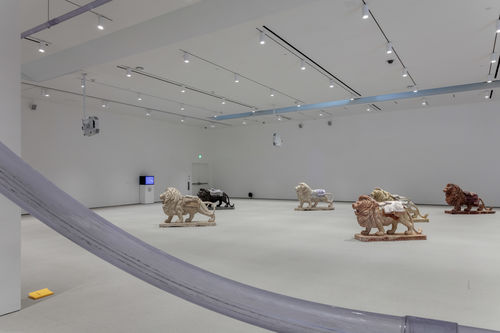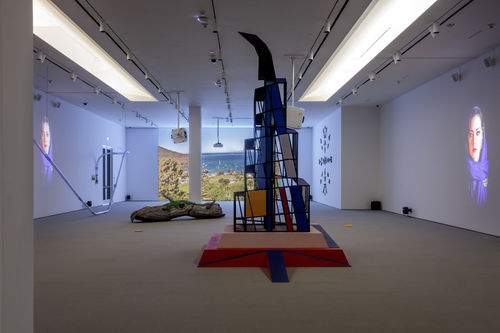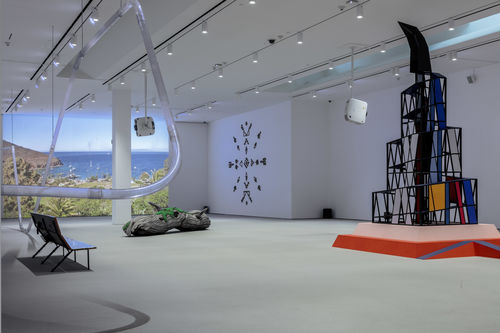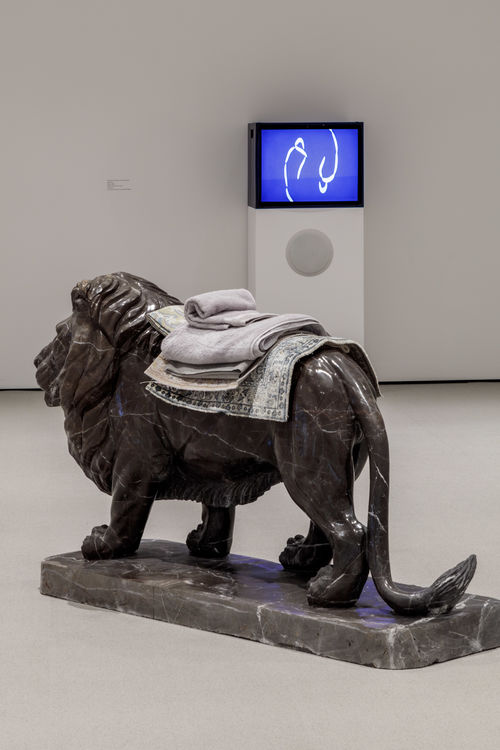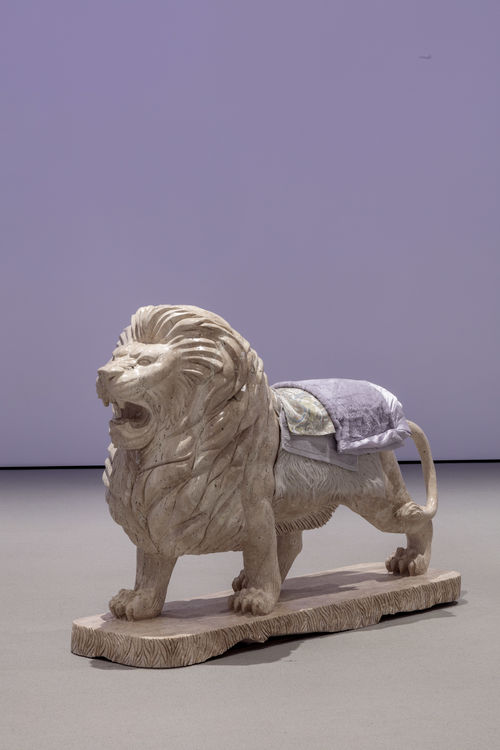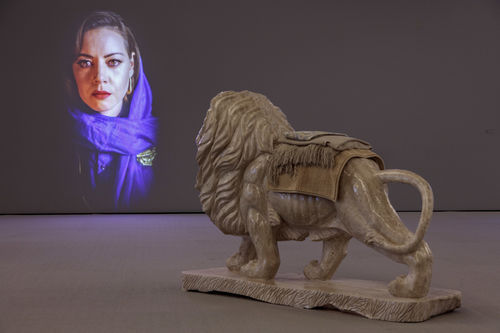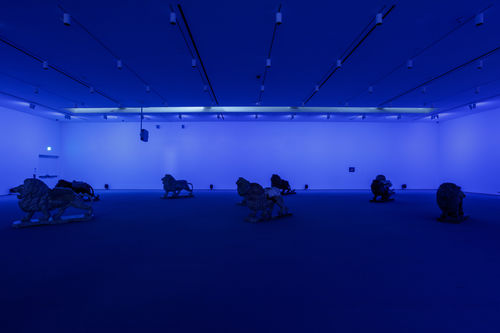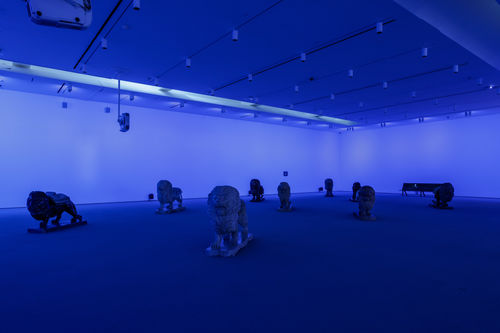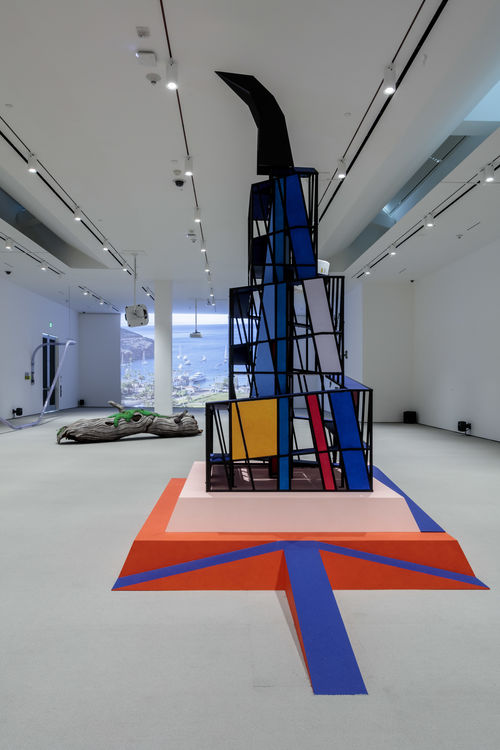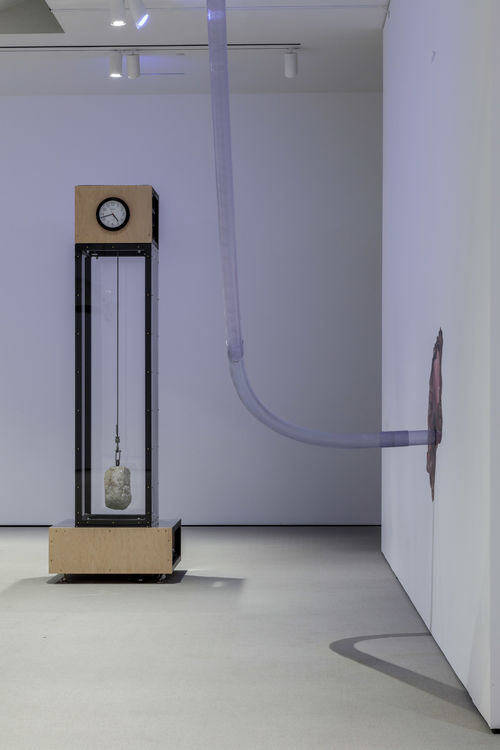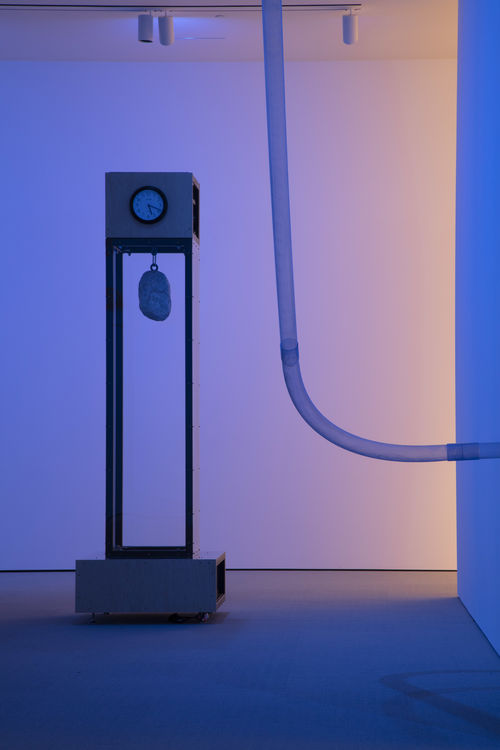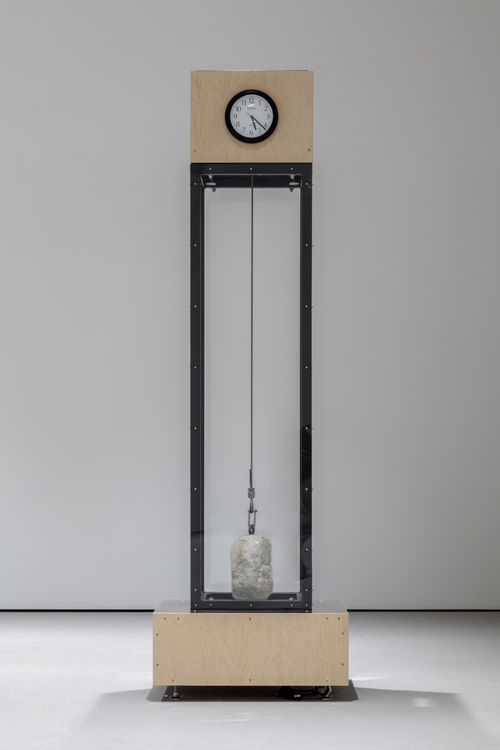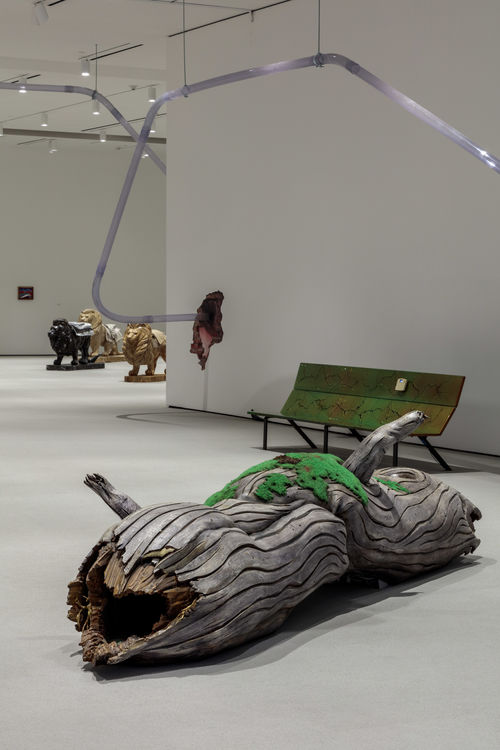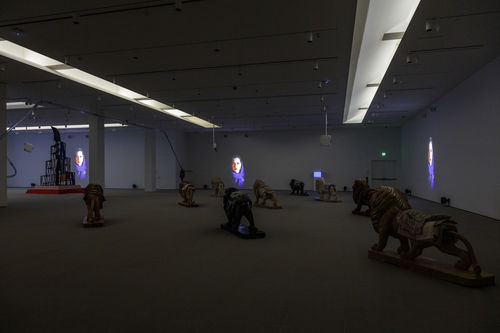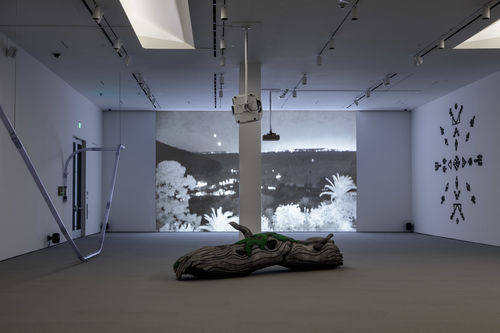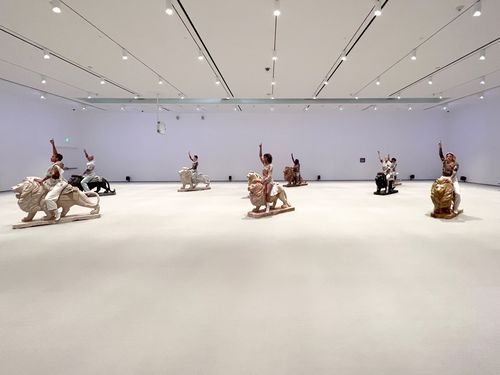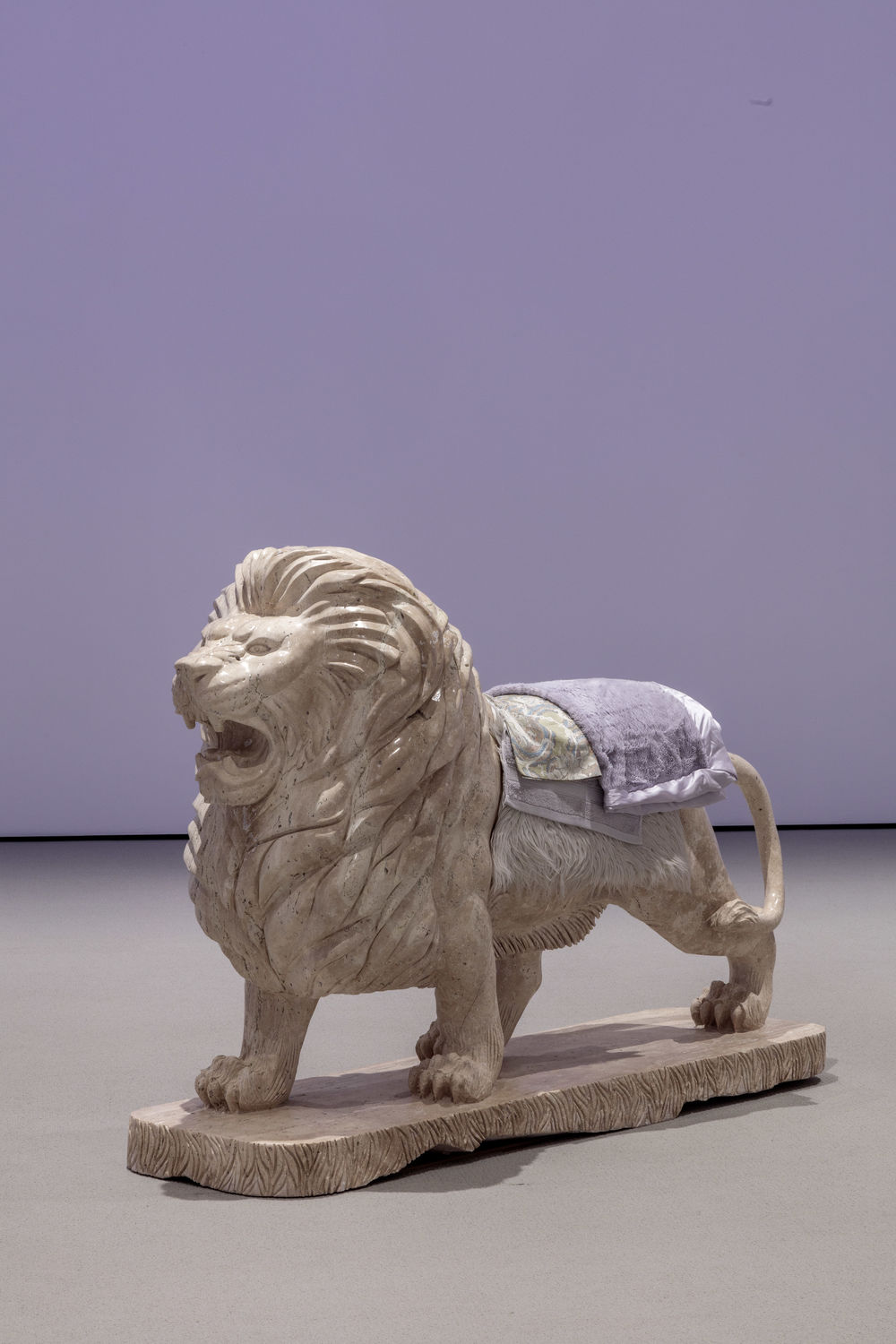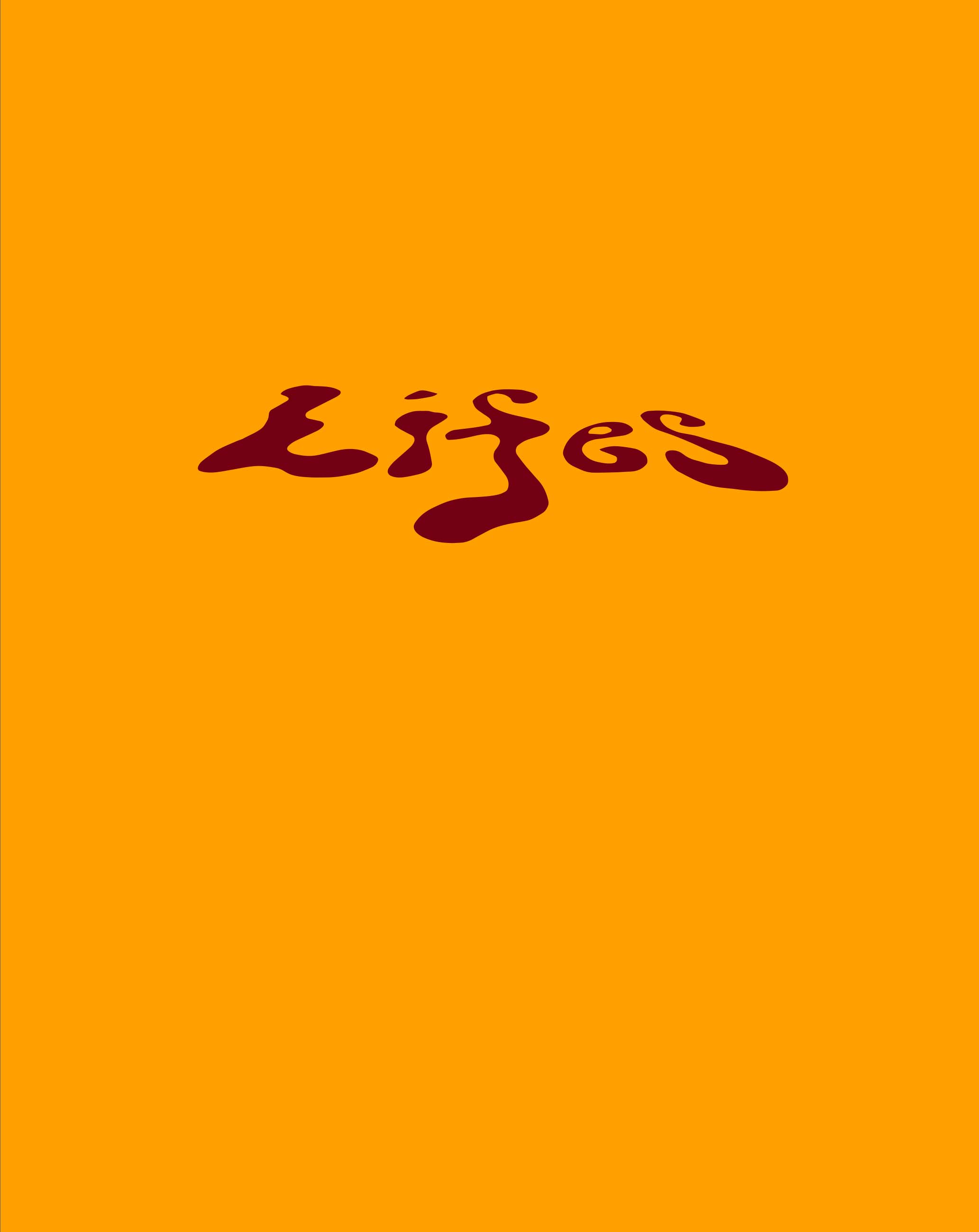
Lifes
- – This is a past exhibition
Lifes is conceived as a durational sequence that unfolds over time. A cycle of audio, video, and live performance repeats at the top of each hour, but there is no singular or optimal way to experience the exhibition. Intermittent dance and music performances interrupt the implied stability of the schedule. The whole assembly becomes an orchestrated cacophony of disparate parts and competing interests. Any moments of dissonance that arise within the container of the exhibition reflect the lived conditions and working methods of artists across disciplines.
Lifes began as a consideration of the promises and pitfalls of interdisciplinary artmaking and the legacy of the so-called total work of art (Gesamtkunstwerk)—a concept originating in the 19th century that proposes a synthesis of poetic, visual, musical, and dramatic arts. The notion of interdisciplinarity has since become a mainstay of contemporary art museums and other presenting organizations. Rather than assume that cross-disciplinary collaboration is a recipe for innovation and creative enrichment, Lifes acknowledges the inherent incompatibilities at play between traditional artistic disciplines and within the spaces of art’s display.
The genesis of Lifes was the written contributions of four writers: philosopher and author Fahim Amir, writer and director Asher Hartman, poet and visual artist Rindon Johnson, and author and essayist Adania Shibli. Spanning literary genres and styles, their texts question who or what has the right to agency, the incompatibility between physical bodies and the spaces that govern them, and the aesthetic misgivings between sensory experiences. The texts—available in full in the exhibition publication—permeate the galleries of the museum as fragments, references, and utterances that test the limits of audibility and legibility.
These writings served as catalysts for conversations with more collaborators—visual artists, choreographers, composers, musicians, vocalists, and other writers—who were invited to engage in a shared dialogue and produce new works for the exhibition. Many contributors suggested the participation of others while maintaining a dialogue with the exhibition’s curator, who managed the dynamic interplay of relations. Overlapping themes emerged, including the translation and mediation of language and the idea of the audience as a material substance inseparable from public exhibitions. Given that the voice is a readymade carrier for words, many conversations skewed toward undermining the reliability of oration and considering what a voice in ruin might sound and feel like.
Additional contributors were invited to address the overall institutional infrastructure that imparts itself onto one’s encounter with art in the museum context. In addition to these commissions, the exhibition incorporates preexisting artworks, dating from 1993 to 2016, by L. Frank, Charles Gaines, Piero Gilardi, and Rosemarie Trockel. These four artists offer a generational framework that situates the other works in the exhibition within art histories of the recent past.
Lifes is organized by Aram Moshayedi, Robert Soros Senior Curator, with Nicholas Barlow, curatorial assistant.
Contributors
Fahim Amir, Holland Andrews, Elke Auer, Gregory Barnett, Kevin Beasley, Nina Beier, Dwayne Brown, Dora Budor, Burnt Sugar the Arkestra Chamber, Varinia Canto Vila, Elaine Carberry, Sophia Cleary, Loren Davis Fisher, Kaydence De Mere, L. Frank, Khalia J. Frazier, Kaye Freeman, Shannon Funchess, Charles Gaines, Ley Gambucci, Abriel Gardner, Piero Gilardi, Jules Gimbrone, Andre Gurewich, Paul Hamilton, Asher Hartman, IONE, Shannon Jackson, Cooper Jacoby, Narissa Johnson, Rindon Johnson, Darrell Jones, Morag Keil, Justin F. Kennedy, Jessika Kenney, Hanieh Khatibi, Bob Kil, Kite, Wayne Koestenbaum, Ralph Lemon, Adam Linder, Tiffany Malakooti, Alucard Mendoza McHaney, Olivia Mole, Roderick Murray, Mariama Noguera-Devers, Nima Nourizadeh, Okwui Okpokwasili, Pauline Oliveros, Jasmine Orpilla, Aubrey Plaza, Senyawa, Adania Shibli, Micah Silver, Samita Sinha, Meg Stuart, Greg Tate, Mike Taylor, Teake, Rosemarie Trockel, Andros Zins-Browne.
Hourly Schedule
Download schedule and map PDF. Also available in the galleries.
- 00:00 The Tuning Meditation
- Pauline Oliveros with IONE
- 00:03 AFGHANISTAN MON AMOUR (ENQUELAB ULTRAMARINE)
- Fahim Amir, Elke Auer, and Nima Nourizadeh
- 00:12 color a body who flees
- Holland Andrews, Elaine Carberry, Jessica Kenney, and Andros Zins-Brown
- 00:21 Parade
- Rosemarie Trockel
- 00:33 All Fours
- Bob Kil and Nina Beier
- 00:43 Terberkatilah Tanah ini (Blessed Be this Land) / Tanggalkan Di Dunia (Undo the World)
- Senyawa
- 00:53 The Fringes of Consciousness Are Promiscuous
- Wayne Koestenbaum
Major support for Lifes is provided by Chara Schreyer and Gordon Freund with generous funding from Christine Meleo Bernstein and Armyan Bernstein, the Danielson Foundation, Karyn Kohl and Silas Dilworth, Leslie and Bill McMorrow, Susan Bay Nimoy and Leonard Nimoy, Mark Sandelson and Nirvana Bravo, Jiwon and Steven Song, and Darren Star. Additional support is provided by Sarah Arison, the Danish Arts Foundation, Jeffrey Deitch, the Knox Foundation, the Korea Foundation, Maurice Marciano Family Foundation, Marla and Jeffrey Michaels, Graham Steele and Ulysses de Santi, Ben Weyerhaeuser, Ann Soh Woods, and an anonymous donor.
Special thanks to the Austrian Federal Ministry for Arts, Culture, Civil Service and Sport; the Austrian Consulate General Los Angeles; and the Berlin Senate Department for Culture and Europe.
Illustration: Olivia Mole (2021)



